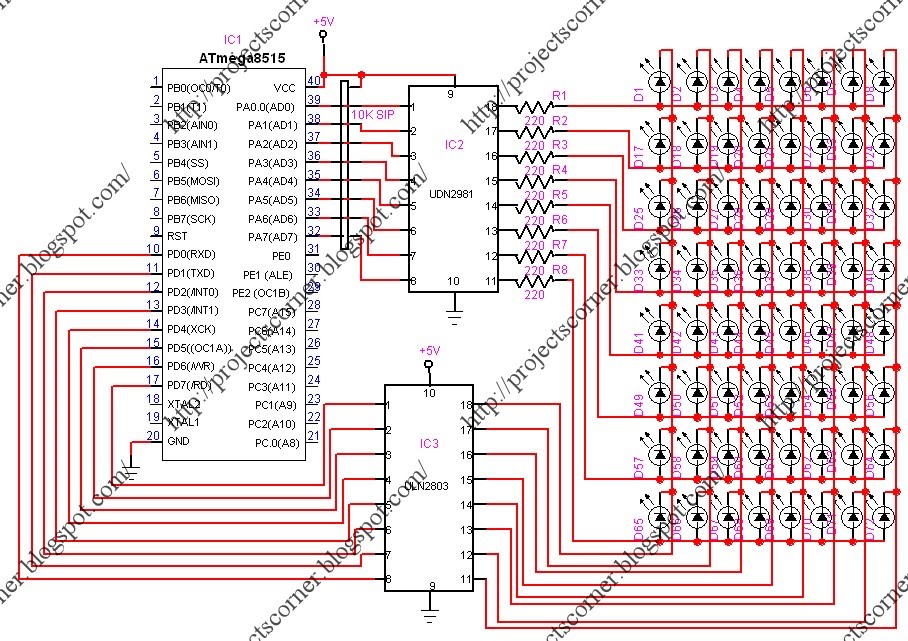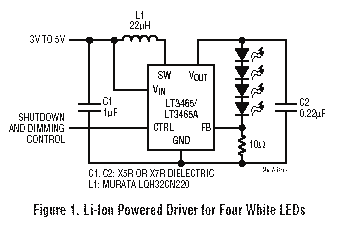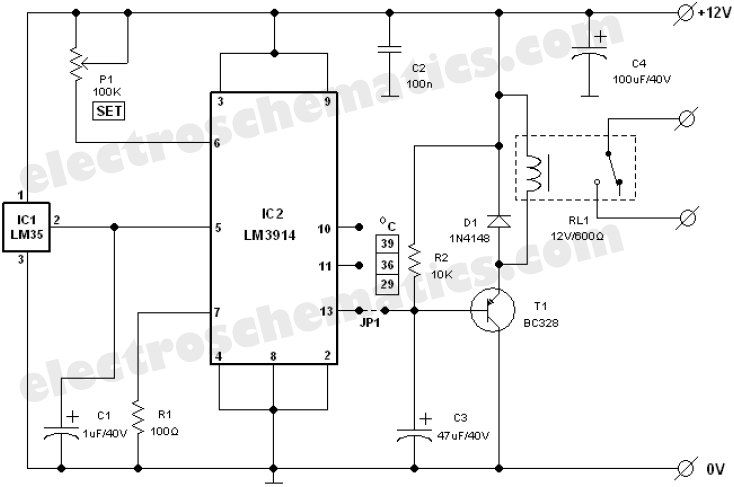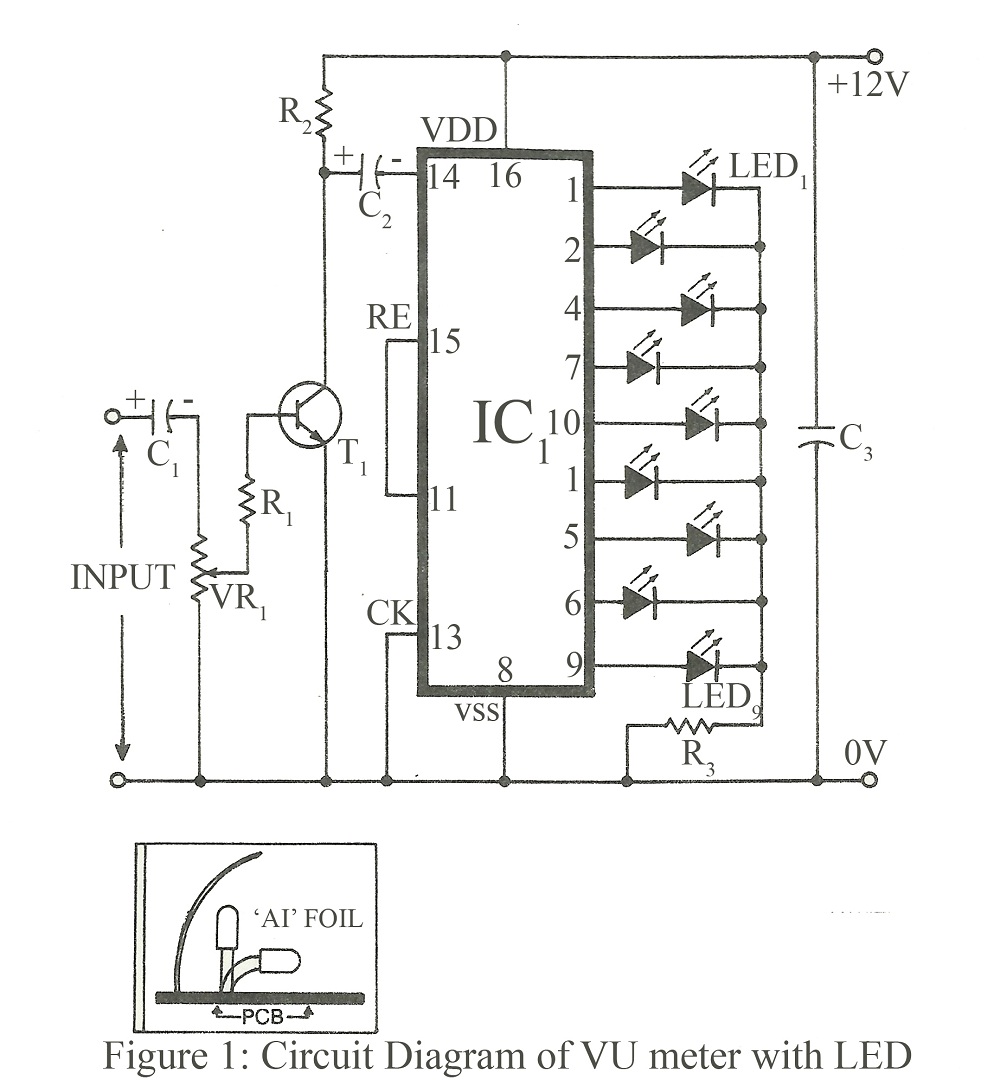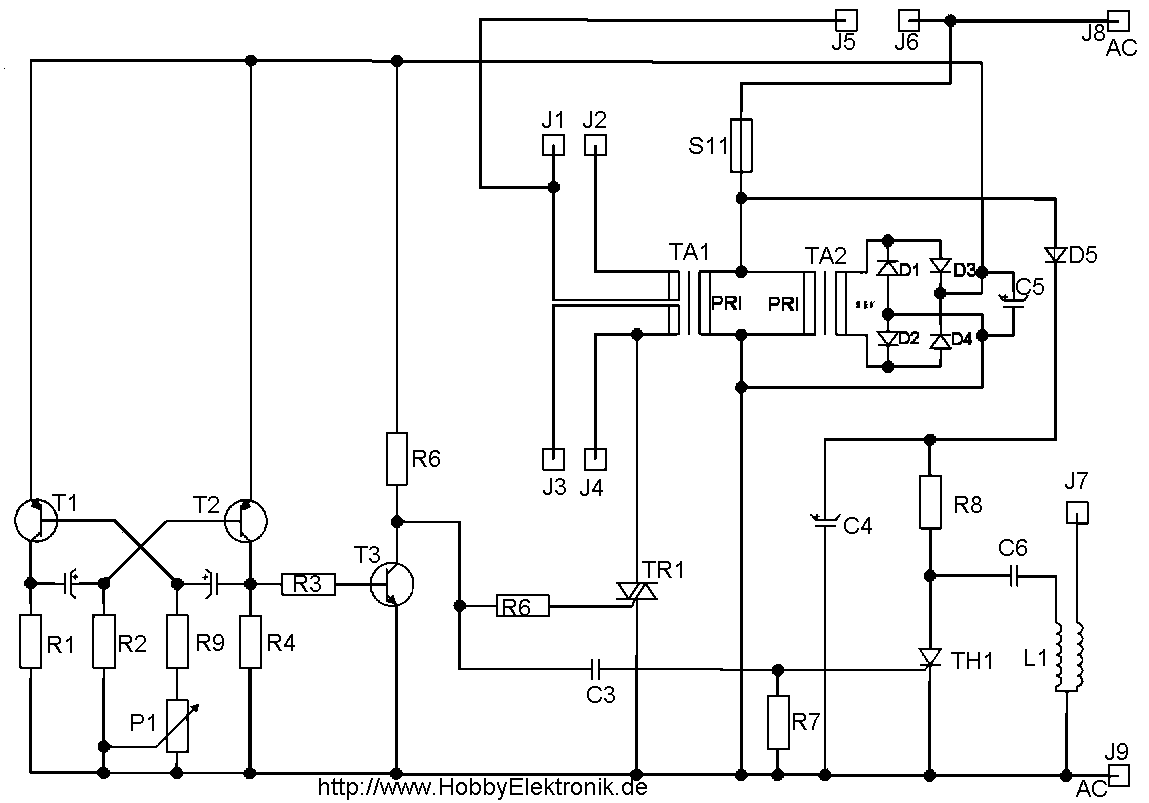
Scrolling text in LED dotmatrix display
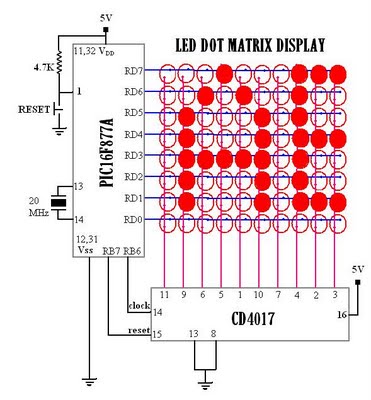
Multiplexed displays are electronic displays where the entire display is not driven simultaneously. Instead, sub-units of the display—typically rows or columns for a dot matrix display or individual characters for a character-oriented display—are multiplexed. This means that they are driven one at a time, but the electronics and the persistence of vision combine to create the illusion that the entire display is continuously active. In this setup, the rows are negative, and the columns are positive. When a single column is connected to a positive voltage of 3V and a single row is connected to ground (0V), the LED at the intersection of the selected row and column will illuminate. If column 1 is selected with multiple rows connected to ground (for instance, rows 1, 2, and 8), the LEDs in those rows will glow. By shifting the positive voltage from column 1 to column 2 and changing the row data, new data can be displayed in column 2. Continuously shifting the column and providing corresponding row data allows for the display of different 8-bit data across the columns. If a frame (10 column shifts) is completed within 1/16th of a second, the persistence of vision makes it appear as though all columns are activated simultaneously, allowing the viewer to see all ten 8-bit data corresponding to the ten columns at once. In this circuit, the PIC16F877A microcontroller provides the 8-bit row data, while the CD4017 is used to select the columns one at a time. A clock signal from the PIC is sent to the CD4017 to shift the column position. Although the PIC16F877A has sufficient PORT pins to eliminate the need for a CD4017 for a small display, it was used to free up other PORT pins for potential future uses, such as interfacing with an LCD, UART, SPI, or PWM. The Hi-Tech C compiler with MPLAB IDE is utilized for compiling the embedded C program and generating the hex file to be loaded onto the PIC.
The multiplexed display system operates by leveraging the principle of time-sharing among the display elements. Each LED or pixel is activated in rapid succession, creating the perception of a full display due to the human eye's persistence of vision. The PIC16F877A microcontroller, known for its versatility and ample GPIO (General Purpose Input/Output) pins, serves as the central controller for managing the timing and data output for the display. The CD4017 decade counter facilitates the sequential activation of the columns, responding to clock pulses generated by the microcontroller.
The implementation involves setting up the microcontroller to output the necessary row data while controlling the clock signal that drives the CD4017. The clock signal must be carefully timed to ensure that the display refresh rate is high enough to maintain the illusion of continuity. This typically requires a frame rate of at least 60 Hz, meaning each column must be activated within approximately 16.67 milliseconds.
In practical terms, the circuit design includes connecting the microcontroller's output pins to the rows of the display and the CD4017's output pins to the columns. Resistors may be included in series with the LEDs to limit current and prevent damage. The software running on the PIC16F877A is responsible for managing the timing of the column shifts and outputting the correct data for each row. This is often accomplished using a timer interrupt or a loop that controls the timing based on the system clock frequency.
Overall, this multiplexed display system not only demonstrates effective use of microcontroller capabilities but also showcases the integration of various electronic components to achieve a functional and visually appealing output.Multiplexed displays are electronic displays where the entire display is not driven at one time. Instead, sub-units of the display (typically, rows or columns for a dot matrix display or individual characters for a character orientated display, occasionally individual display elements) are multiplexed, that is, driven one at a time, but the electr onics and the persistence of vision combine to make the viewer believe the entire display is continuously active. In the above figure, the rows are negative and columns are positive. Now, if I connect a single column to positive 3V and a single row to negative (0v), then the LED in place of the intersection of the corresponding row and column will glow.
Now, if we select a single column(means a + volt at selected column), say column 1 and multiple rows (means connect 0V to few selected rows), say row 1, 2 & 8, then the selected 1, 2 and 8 LEDs in column 1 will glow. Now if i shift the column(means shifting the positive voltage from column 1 to column 2), and if i change the row data, then the new data will be displayed in column 2.
Now, if i continuously shift the column and provide row data corresponding to each column, then i can display the different row data (8 bit) in different columns. . So, if one frame(10 column shift) is completed within 1/16 th of a second, then due to the persistence of vision of our eye, we will feel the entire columns are activated at a time, and thus we will see all the ten -8bit data corresponding to the 10 columns, at a time.
In the above circuit, the PIC16F877A provides the 8 bit row data. CD4017 is used to select the column one by one. Now, for shifting the column position, a clock is provided by the PIC to the CD4017. On every clock, the column is shifted. (from right to left in this case). Here, I used a PIC16F877A microcontroller and a CD4017 johnson counter. But the 40 pin PIC16F877A is having more number of PORT pins, and thus there is no need of the CD4017 for this small display, and i could use some other port pins of the PIC to work as a johnson counter. But any way, i used a CD4017 just because, in the same circuit board, i could use other free PORT pins for some other purpose like LCD interfacing, USRT, SPI, PWM etc later.
I am using Hi-Tech C compiler with MPLAB IDE for compiling the embedded C program and thereby generating the hex file which is to be loaded/burned to the PIC. There are many other C compilers, but i started with Hi-Tech C and I like it. So I am continuing with it. /* To display a still letter `F` in the display */ #include #define _XTAL_FREQ 20e6 _CONFIG(0x3F3A); unsigned char i; vo blank the display */ display(0x01); /* 1/5 ptness.
I can rectify th(){scroll(0x01, 0x7D, 0 not a good way. Bett0}, // ; {0x00, 0x08, 0x14, 0x22, 0x00}, // < {0x14, 0x14, 0x14, 0x14, 00x0e, 0x70, 0x00}, // Y 🔗 External reference
The multiplexed display system operates by leveraging the principle of time-sharing among the display elements. Each LED or pixel is activated in rapid succession, creating the perception of a full display due to the human eye's persistence of vision. The PIC16F877A microcontroller, known for its versatility and ample GPIO (General Purpose Input/Output) pins, serves as the central controller for managing the timing and data output for the display. The CD4017 decade counter facilitates the sequential activation of the columns, responding to clock pulses generated by the microcontroller.
The implementation involves setting up the microcontroller to output the necessary row data while controlling the clock signal that drives the CD4017. The clock signal must be carefully timed to ensure that the display refresh rate is high enough to maintain the illusion of continuity. This typically requires a frame rate of at least 60 Hz, meaning each column must be activated within approximately 16.67 milliseconds.
In practical terms, the circuit design includes connecting the microcontroller's output pins to the rows of the display and the CD4017's output pins to the columns. Resistors may be included in series with the LEDs to limit current and prevent damage. The software running on the PIC16F877A is responsible for managing the timing of the column shifts and outputting the correct data for each row. This is often accomplished using a timer interrupt or a loop that controls the timing based on the system clock frequency.
Overall, this multiplexed display system not only demonstrates effective use of microcontroller capabilities but also showcases the integration of various electronic components to achieve a functional and visually appealing output.Multiplexed displays are electronic displays where the entire display is not driven at one time. Instead, sub-units of the display (typically, rows or columns for a dot matrix display or individual characters for a character orientated display, occasionally individual display elements) are multiplexed, that is, driven one at a time, but the electr onics and the persistence of vision combine to make the viewer believe the entire display is continuously active. In the above figure, the rows are negative and columns are positive. Now, if I connect a single column to positive 3V and a single row to negative (0v), then the LED in place of the intersection of the corresponding row and column will glow.
Now, if we select a single column(means a + volt at selected column), say column 1 and multiple rows (means connect 0V to few selected rows), say row 1, 2 & 8, then the selected 1, 2 and 8 LEDs in column 1 will glow. Now if i shift the column(means shifting the positive voltage from column 1 to column 2), and if i change the row data, then the new data will be displayed in column 2.
Now, if i continuously shift the column and provide row data corresponding to each column, then i can display the different row data (8 bit) in different columns. . So, if one frame(10 column shift) is completed within 1/16 th of a second, then due to the persistence of vision of our eye, we will feel the entire columns are activated at a time, and thus we will see all the ten -8bit data corresponding to the 10 columns, at a time.
In the above circuit, the PIC16F877A provides the 8 bit row data. CD4017 is used to select the column one by one. Now, for shifting the column position, a clock is provided by the PIC to the CD4017. On every clock, the column is shifted. (from right to left in this case). Here, I used a PIC16F877A microcontroller and a CD4017 johnson counter. But the 40 pin PIC16F877A is having more number of PORT pins, and thus there is no need of the CD4017 for this small display, and i could use some other port pins of the PIC to work as a johnson counter. But any way, i used a CD4017 just because, in the same circuit board, i could use other free PORT pins for some other purpose like LCD interfacing, USRT, SPI, PWM etc later.
I am using Hi-Tech C compiler with MPLAB IDE for compiling the embedded C program and thereby generating the hex file which is to be loaded/burned to the PIC. There are many other C compilers, but i started with Hi-Tech C and I like it. So I am continuing with it. /* To display a still letter `F` in the display */ #include
I can rectify th(){scroll(0x01, 0x7D, 0 not a good way. Bett0}, // ; {0x00, 0x08, 0x14, 0x22, 0x00}, // < {0x14, 0x14, 0x14, 0x14, 00x0e, 0x70, 0x00}, // Y 🔗 External reference
Warning: include(partials/cookie-banner.php): Failed to open stream: Permission denied in /var/www/html/nextgr/view-circuit.php on line 713
Warning: include(): Failed opening 'partials/cookie-banner.php' for inclusion (include_path='.:/usr/share/php') in /var/www/html/nextgr/view-circuit.php on line 713
